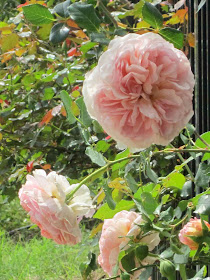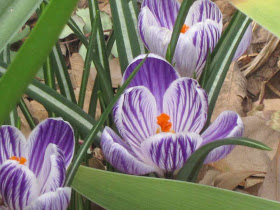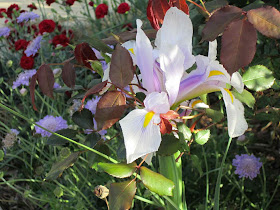It's that time again! It's the 20th of the month, and time for Garden Book Reviews! You're invited to join in each month - I'd love to hear your review of any book that you've read with a gardening theme.
With my review today, you're in for a treat - or not - depending upon your perspective. I'm going to tell you about my very favorite garden book. If I could only have one garden book, this would be the book I would choose. When I started designing my garden, I literally carried this book around with me everywhere I went - inside and out. It's been rained on, and the pages are close to falling out. But every time I need inspiration, or get stuck in working out a new bedding plan, I turn to this book.
But it's not for everyone. It's about formally designed gardens. So, if you don't like that style of gardens, just jump down to the linky to join in with your own garden book review. But if you like symmetrical, balanced, classical gardens, read on:
~~~~~~~~~~~~~
Art of the Formal Garden
by Arend Jan Van Der Horst
Symmetry with romantic plantings. That is this entire book in a nutshell. Not only are there fabulous photographs, but also garden plans, complete with plantings. I don't usually look at garden plans, as they never seem to fit in my garden. But this is not a 'follow this plan' type of book. This book gives you so many options, it allows you to come up with your own creative solutions.
The chapters are divided into different aspects found in formal gardens - hedges, herbaceous borders, water, arches and pergolas, ornaments, paths, etc. In each chapter, he gives the design element, describes specific examples used in different gardens, then lists many more additional choices of what might work in your own garden. My mind would race at the possibilities! With so much inspiration, I found that I could take the design principles and easily fit them in my own garden.
I purchased the softcover, but I so wish I had splurged for the hardcover. Who should read this book? Anyone that wants formal, symmetrical, or balanced design in their garden. I hope if you like formal, romantic gardens, you will find a copy of this book to read. You won't be disappointed!
~~~~~~~~
Now it's your turn! Joining is easy, and we love to hear about new or old garden books.
You know the rules:
1) Any book about gardening, gardens, or has a garden influence in it is fine, except:
2) No links/reviews about growing substances that are illegal in the United States. (I know I don't have to worry about my blogging buddies, but I thought I needed to clarify in case someone new tries slipping one in!)
I promise to read your post, and I hope you'll read the other participants' posts, too. You never know - you may find your next favorite garden book!























































